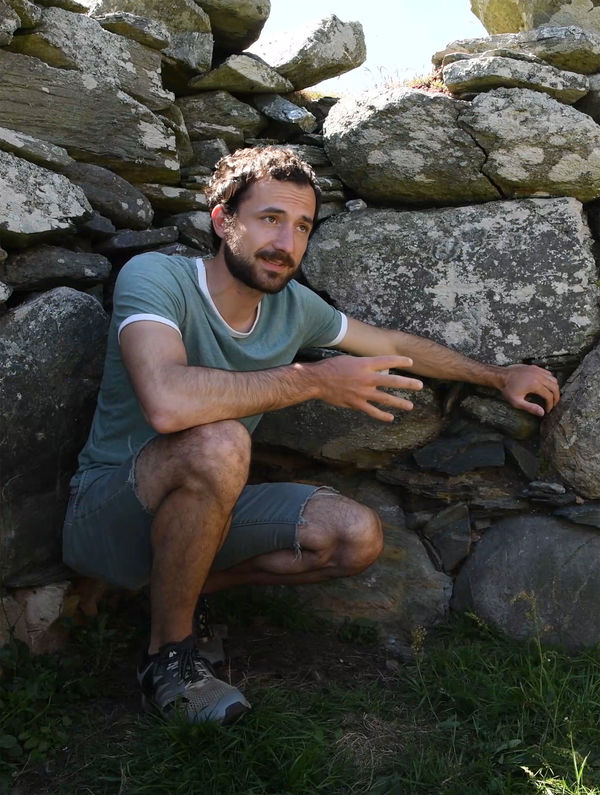Ryan Lash

Dr. Ryan Lash holds a BA in Anthropology and Medieval Studies from the University of Notre Dame (’10), an MPhil in Anglo-Saxon, Norse, and Celtic from the University of Cambridge (’11), and a PhD in Anthropology from the Northwestern University (’19). He was the first Notre Dame graduate awarded a Gates Cambridge Scholarship and previously held a postdoctoral fellowship in the Department of Anthropology at Notre Dame.
Dr. Lash’s research explores how interactions between humans, animals, objects, and landscapes shape sensory experience, perceptions of heritage, and notions of social affinity and difference. This has involved archaeological survey and excavation in coastal Connemara, experimental replication of early medieval carved stone cross-slabs, and participant observation in sheep and cattle pastoralism (which he misses most of all). He is also interested in the interaction of embodied skills and memory, particularly in Irish and Italian folk music, oral histories and poetries, and traditional archery. His works are published in Antiquity, Journal of Social Archaeology, Medieval Archaeology, and The Routledge Handbook of Sensory Archaeology.
Since 2007 as an undergradute at Notre Dame and continuing through his doctoral program at Northwestern University, Dr. Lash has worked on the Cultural Landscapes of the Irish Coast (CLIC) Project, led by Faculty Fellow Ian Kuijt. A community-engaged and multi-disciplinary archaeological research project, it is centered on the islands of Inishark and Inishbofin, Co. Galway. Drawing from his doctoral research, this year at the Keough-Naughton Institute, Ryan will work to publish Island Endurance: Heritage and Sustainability on Inishark and Inishbofin. Combining archaeology, ethnography, folklore, and the archival record, this book investigates how islanders have repeatedly and creatively used the material legacies of the past to cultivate new forms of belonging and livelihood from the early medieval period to the present. On Inishark, evacuated in 1960, islanders in the 19th and 20th centuries used the ruins of an early medieval monastic settlement as focal points of communal devotion and as sources of solidarity that helped to sustain collective economic regimes despite persistent marginalization. On Inishbofin, still home to about 170 residents, archaeological monuments and displays of traditional practices feature in a burgeoning heritage tourism trade that fosters perceptions of belonging among visitors who return annually to the island. A repudiation of the ‘timelessness’ of Irish Islands, Island Endurance will showcase how islanders creatively reconfigure heritage to maintain livelihoods in trying and ever-changing conditions.
Dr. Lash grew up in Venetia, Pennsylvania. He likes playing the mandolin and Irish bouzouki, cooking, archery, and helping his friends in Ireland gather and shear sheep (with varying degrees of success). Before the pandemic, he enjoyed participating in traditional Irish music sessions in South Bend with local musicians who showed great welcome for a novice player.